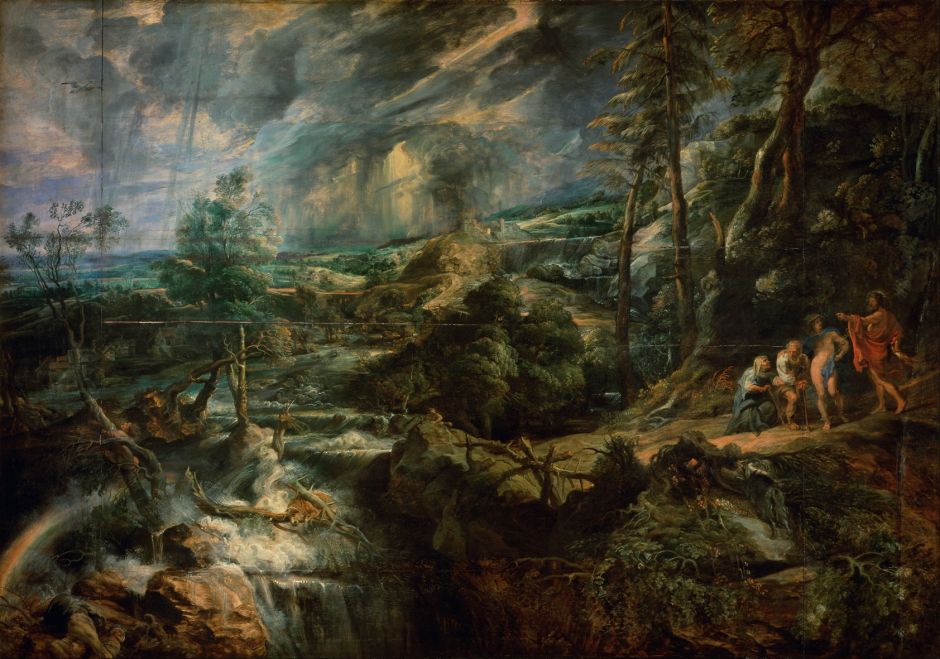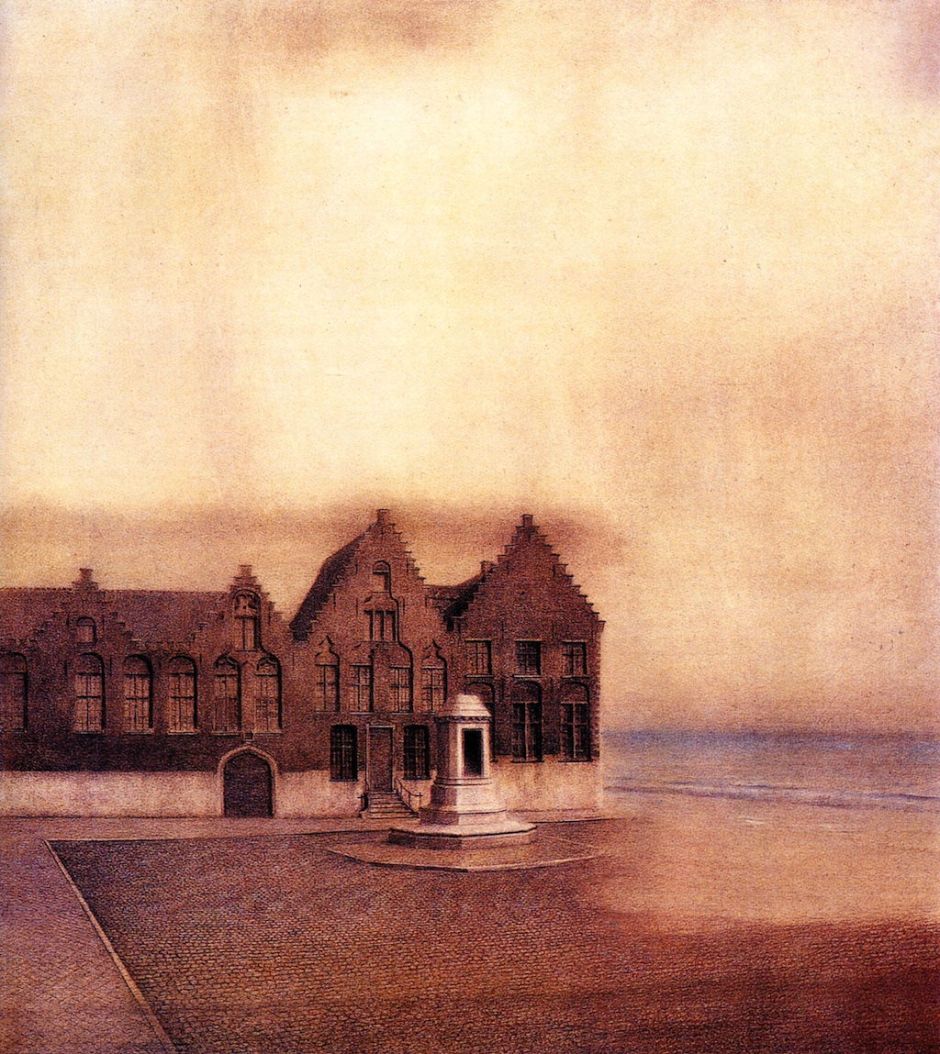In the first of these two articles centred on the English proverb of “February fill dyke, be it black or be it white”, I showed a selection of paintings of the Great Flood from the Old Testament book of Genesis. There’s a parallel account in classical Greek myth, told in Ovid’s Metamorphoses and elsewhere.
Prometheus warned his son, Deucalion, who was the ruler of Phthia, that a flood was coming, and told him to build a chest to contain provisions. The flood came, and only Deucalion and his wife Pyrrha survived. The chest touched ground at Mount Parnassus, or maybe Mounts Etna, Athos, or Othrys, depending on the version. As Deucalion and Pyrrha were old at the time, they consulted an oracle, who told them to cover their heads and throw rocks behind them. This they did and the rocks turned into people, who then repopulated the world.

Unusually, Merwart’s The Flood, painted towards the end of the 1800s, refers primarily to the myth of Deucalion, who is here rather younger and holding his wife up from the crashing waves. Unfortunately he doesn’t appear to refer to the chest that was key to their survival.

Leonaert Bramer’s watercolour miniature of Scene from the Metamorphoses (c 1665) shows an elderly Deucalion assisting Pyrrha from the waters. Presumably the other bodies shown in the floodwaters are already dead or dying.
Classical myth has a second flood, also told by Ovid in his Metamorphoses. In this, the gods Jupiter and Mercury sought hospitality in a small village, but were rejected by all apart from a poor and elderly couple, Philemon and Baucis. To punish the others for their refusal of hospitality, the gods brought on a flood, and led the couple to high ground and safety as their reward.

Rubens’ Stormy Landscape with Philemon and Baucis (c 1625) is one of the few paintings to show a broader view of later moments in Ovid’s story. His dramatic landscape shows storm clouds building over the hills, a raging torrent pouring down the mountainside, dragging large trees and animals in its swollen waters, and the four figures on a track at the right. Philemon and Baucis are struggling up the track with their sticks, Jupiter points to a rainbow formed over a waterfall at the lower left corner, and Mercury is all but naked.

Poussin combined his depiction of the Biblical flood with one of his late seasons, Winter (c 1660-1664). Lightning flashes in the background, where Noah’s Ark is seen floating securely. A small crowd has taken to the roof of a building to escape the waters. More desperate struggles are shown in the foreground, with a boat almost capsized, its occupant raising his hands in prayer.
More curious is the appearance of a snake, on the rocks at the left. Poussin not infrequently included snakes in his landscapes. This hasn’t been explained convincingly, except as a reference to the role of the serpent in the Fall of Man, Adam and Eve in the garden of Eden.

John Martin’s painting of The Deluge from 1834 has two points of reference: the Biblical account of the flood, and Martin’s personal belief in prior catastrophe.
As the sciences became ascendant during the nineteenth century, some educated people believed that in the past there had been an alignment of the sun, earth, and moon, and the collision of a comet resulting in global flooding. This was promoted by the French natural scientist Baron Georges Cuvier, and subscribed to by Martin.
True to form, his painting is dark and apocalyptic: near the centre, tiny survivors are just about to be overwhelmed by an immense wave bearing down at them from the left and above. The misaligned sun and moon barely penetrate the dense cloud, and to the top right is a melée of rock avalanche and lightning bolt. This was awarded a gold medal at the Paris Salon of 1835.
The city of Paris is built on the flood-plain of the River Seine, and has frequently suffered flooding. At the height of Impressionism in March 1876, the Seine burst its banks, leading to several fine views of flooded suburbs.

Flood at Port-Marly (1876) is perhaps the most famous of Alfred Sisley’s paintings of the floods that March, and was among his paintings exhibited at the Second Impressionist Exhibition, held at the Galerie Durand-Ruel in Paris the following month. Although the sky is broken, it still looks like rain, as local residents take to their boats on what should have been dry land.

In another view of the same building from a different angle, in Boat in the Flood at Port-Marly (1876), Sisley captures the complex rhythm of the leafless pollards standing proud of the water.
My last two paintings come from the imagination of Fernand Khnopff during the later part of his career, when they formed a recurrent theme.

Secret-Reflection (1902) is a pair of paintings in pastel and crayon on paper. In the upper image, the artist’s sister Marguerite is swathed in clothes, here a brilliant blue robe draped on her body, and a pale indigo wrap on her head, with elbow-length white silk gloves. Her right hand is caressing the mask of a woman, which seems to be fixed to a cerulean blue fluted column.
The lower painting shows a flooded town, probably the city of Bruges from Khnopff’s childhood.

His Abandoned City from 1904 was inspired by Woensdagmarkt Square in Bruges. Deserted, its cobbles fade gradually to a flat beach from the North Sea coast, with small waves rolling in. Although the majority of the image is taken up by the sky, it has only ill-defined areas of light and dark, and is as featureless as the square is desolate.

May your February floods remain small puddles.

